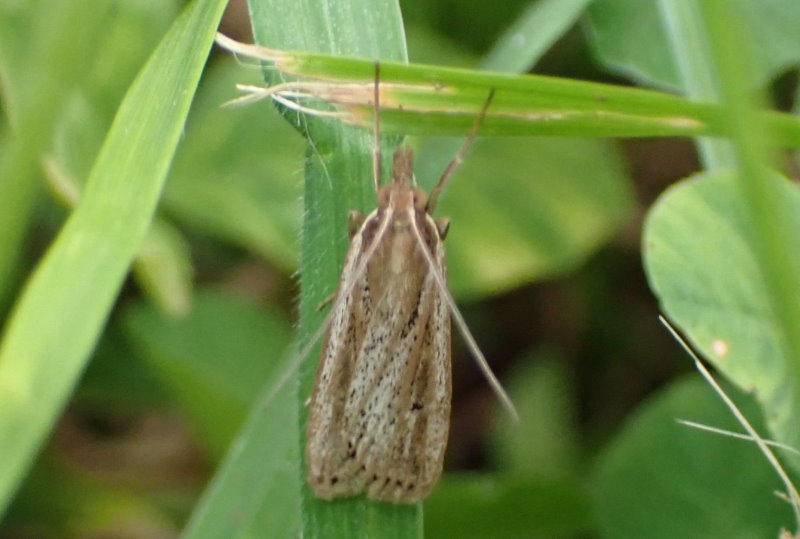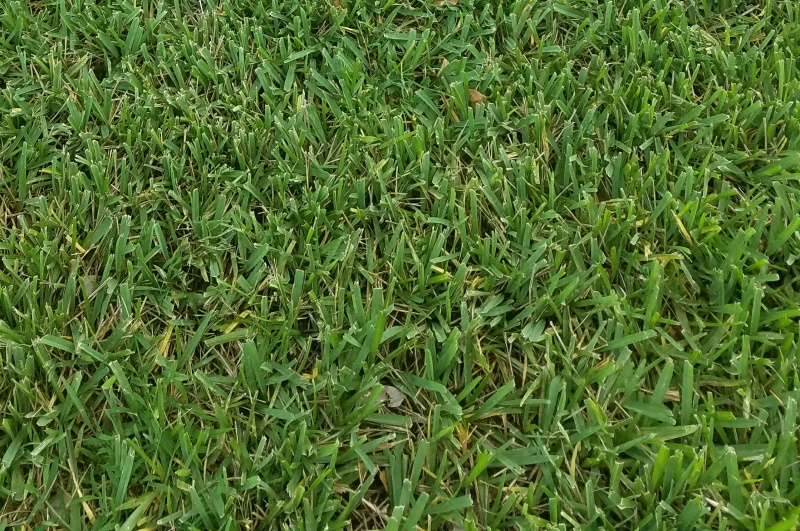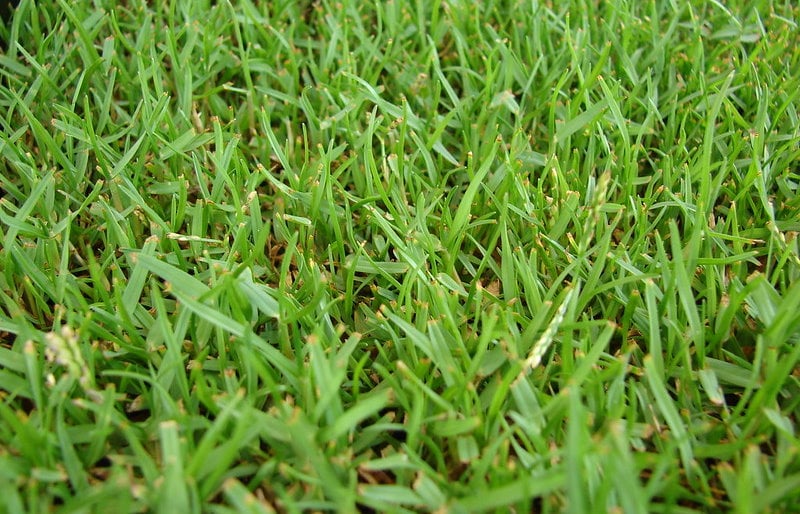
Young members of the animal kingdom need good nutrition to grow big and strong, and sod webworms are no exception. Sod webworms are the larval or caterpillar form of lawn moths. Unfortunately for homeowners, their favorite snack is grass instead of fish-shaped crackers. Don’t worry, though, we have simple ways to get rid of and prevent sod webworms in your lawn.
In this article, we’ll cover:
- What are sod webworms
- How to identify sod webworm damage
- How to test for sod webworms
- How to get rid of sod webworms in your lawn
- How to prevent sod webworms in your lawn
- Facts about sod webworms

What are sod webworms?
Sod webworms are the caterpillar or larval stage of what are commonly called “lawn moths.” It is only the caterpillar stage you need to worry about: The caterpillars munch on your grass blades, but the moth (adult) stage won’t do any harm to your lawn.
There are over 20 species of these lawn-loving caterpillars, and they can be found throughout the country in most cool- and warm-season grasses.
How to identify sod webworm damage
Sod webworm damage usually starts as small spots of browning turf that can grow and coalesce as feeding continues. Patches are irregular in shape and start to thin and turn brown.
How to test for sod webworms
If you want to know whether these brown patches are due to sod webworms, here are four ways to check:
1. Hands and knees test
Sod webworms feed at night, so go into the lawn around dusk. Look for an area of damaged turf, and get on your hands and knees to look through the brown grass. You may see:
- Tiny worms crawling about
- Green-colored frass (excrement)
- Eggs
Also, look on the blades of grass. You’ll see irregularly shaped bite marks on the blade with yellowing or browning where it’s been chewed.
Fun Fact: Some species of sod webworm caterpillars are translucent, and if they’ve been munching on your grass, you’ll see the green foliage in their intestinal tract.
2. Drench test
If you can’t spot them on your hands and knees, bring them to the surface with a drench test.
- Choose an area where you see webworm damage
- Mark out an area in the lawn that is 1 square yard in size
- Add 1 ounce of dish soap to 1 gallon of water
- Pour the water over the area
- If there are more than 15 larvae (healthy lawn) or 5 larvae (stressed turf) per square yard, consider treatment.
3. Look for moths
This is not a tip on how to ID sod webworms, but it’s another way to help determine if they are in your lawn.
Moths are the adult version of sod webworms. If you go into the lawn in the evening and see moths flying just above the grass, that’s another good indication that you have (or will have) webworms munching on your lawn.
Moths release their eggs onto the grass in the early evening or late afternoon as they flit about. Within a week or so, the eggs will hatch and the larvae will start to feed.
Note on feeding: Sod webworm larvae do the most damage (chomping and chewing) in the later (fifth and sixth) larval phases. Damage in the earlier larval stages turns grass leaves into “leaf skeletons” and may be easy to miss.
4. Keep an eye out for birds
There are many reasons for birds to be in your yard, but they can indicate there are pests like sod webworms in your lawn. If you notice more birds in your yard, especially if they land in these newly brown spots, you may want to check to see if sod webworms or another tasty insect is to blame.
How to get rid of sod webworms in your lawn
If you need to get rid of sod webworms, the good news is that you have several products to choose from. Check out these biological and chemical treatment options and see which one best fits your treatment goals:
Biological control options
- Bacillus thuringiensis ssp. Kurstaki OR ssp. Aizawai: Also known as Bt, this bacteria works best on young larval stages. This product washes off with water, so plan to reapply after it rains or after you water the lawn. Apply it in the early evening when they come out to feed.
Note: There are different types of Bt, so make sure you buy the Bt with “Kurstaki” or “Aizawai” at the end of the name.
- Nematodes: Steinernema carpocapsae nematodes are a type of beneficial nematode that help control sod webworms and other undesirable insects in your lawn.
- Azadirachtin: This product comes from the neem tree (just like neem oil).
- Spinosad: Another popular organic pest control ingredient, spinosad is a type of bacteria that can help control lawn caterpillars. Make sure it’s dry before the bees come out, as it’s toxic to bees while it’s wet.
Chemical control options
Here are a few active ingredients to look for that will control sod webworms in your lawn:
- Acephate
- Carbaryl
- Cyfluthrin
- Ethoprop
- Trichlorfon
If you don’t want to go to the store with a list of active ingredients in hand, keep it simple. Most insect control products at the big box stores (granular or liquid) will control sod webworms. Even if you don’t see sod webworms on the front of the product, read the list of bugs on the back. Sod webworms are likely included in that list.
When to treat sod webworms: Whether you use biological or chemical solutions, try to treat early in the season, when the pests are about one-quarter inch long, for the best results. This is usually about two to three weeks after you see the moths flitting about the lawn in late spring.
If you don’t catch the first generation when they’re young, apply as soon as you have positively identified this bug. Sod webworms come out after the sun sets, so apply chemicals in the early evening to spray right as they come out to feed.
Note: Not all webworm damage requires treatment. Stronger, healthier lawns may resist and recover from damage without treatment, while lawns that are already stressed may benefit from treatment.
How to prevent sod webworms in your lawn
Preventing sod webworms or managing a small infestation is very doable. Here are a few DIY tips on how to get there:
Proper lawn care
Basic lawn care is your best friend if you need to strengthen your lawn against sod webworms or any other recurring insect issue. Sod webworms feed on warm-season and cool-season lawns (see charts below), so we’ll include information for both.
Fertilize sparingly: Sod webworms and many other grass-dwelling insects love it when homeowners over-fertilize their lawns. Too much fertilization increases thatch levels (in some grasses) and provides lots of tender top growth, which insects love to munch on.
| Cool-season grasses | Fertilizer (in pounds nitrogen/1,000 square feet/year) |
| Fine fescue | 1-2 pounds |
| Kentucky bluegrass | 1-5 pounds |
| Perennial ryegrass | 1-5 pounds |
| Warm-season grasses | Fertilizer (in pounds nitrogen/1,000 square feet/year) |
| Bahiagrass | 1-4 pounds |
| Bermudagrass | 1-4.5 pounds |
| Carpetgrass | Optional, up to 2 pounds |
| Centipedegrass | 0.5-2 pounds |
| Seashore paspalum | 2-4 pounds |
| St. Augustinegrass | 2-6 pounds |
| Zoysiagrass | 0.5-2.5 pounds |

Remove thatch and collect clippings: If you have an infestation of sod webworms, removing some of the thatch layer might help. If you have a thatch layer of over one-half inch, that will encourage many insects, not only sod webworms. In addition, dethatching your lawn while you have a sod webworm infestation will remove some of the eggs and larvae that are living on the thatch layer. Collect your clippings as you mow for the same reason.
Mow at the correct height: Believe it or not, your grass has been bred to be cut at a certain height. Anything taller or shorter, and it won’t perform at its best.
| Cool-season grasses | Mowing height |
| Fine fescue | 1.5-3 inches |
| Kentucky bluegrass | 2-3 inches |
| Perennial ryegrass | 2-3 inches |
| Warm-season grasses | Mowing height |
| Bahiagrass | 3-4 inches |
| Bermudagrass | 1-2 inches (non-hybrid varieties) |
| Carpetgrass | 1-2 inches |
| Centipedegrass | 1.5-2 inches |
| Seashore paspalum | 1-2 inches |
| St. Augustinegrass | 2.5-3 inches for dwarf cultivars; 3-4 inches for standard cultivars |
| Zoysiagrass | 1-2.5 inches |
Water well: Sod webworms congregate in dry, drought-stressed areas, so irrigation is important. Water loam and clay soils once per week with 1-1 ½ inches of water. Sandy soils need watering two to three times per week (same total amount of water) since they don’t hold water well.
Choose resistant grasses
Endophyte-enhanced grasses, namely certain types of perennial ryegrass and fescues, help deter sod webworms from munching on your grass. There are no Kentucky bluegrass (KBG) cultivars with endophytes, but you can always overseed with either of these other cool-season grasses to give a KBG lawn greater resistance.
As for warm-season grasses, here are a few St. Augustinegrass and Zoysiagrass cultivars that resist sod webworm feeding:

St. Augustine (moderate resistance):
- Amerishade
- Captiva
- Floratine
- FX-10
- Winchester

Zoysia (high resistance):
- Cavalier
- DALZ850 1
- JZ-1
Facts about sod webworms
Life cycle
There are four broad life stages for sod webworms:
Egg
Adult sod webworm moths deposit egg masses in the grass as they fly over the lawn on late spring evenings. Eggs hatch in roughly one to two weeks.
Larvae
After hatching from the egg, small larvae start to feed on the surface of the grass blade. This “superficial” damage can be hard to spot. However, as larvae get older, they start to chomp and notch into the blade as they feed, which is much easier to see on the grass blades.
Sod webworm caterpillars go through as many as 10 larval stages before they turn into a pupa. The entire life cycle, from egg to adult, takes from three to seven weeks, depending on the temperature.
Pupa
After the webworm larvae have finished growing, they turn into pupae, which live in the upper thatch layer until they emerge as moths (adults).
Adult
Adult sod webworms, like butterflies, are no longer caterpillars but have blossomed into a completely different creature — a moth.
Depending on the species and the climate, there can be from one to four generations each year. Near the end of the season, most larvae weave a home for themselves and overwinter cozily tucked into the soil.
With the arrival of spring, they emerge, feed, pupate, and turn into adults (moths) by late spring and start the life cycle over again.
Feeding behavior
Sod webworms, as their name suggests, like to munch on grass. As nocturnal insects, they act like vampires, munching the life out of your lawn before sunrise.
Here are the common cool- and warm-season grasses sod webworms munch on most often:
Cool-season grasses:
- Fine fescue
- Kentucky bluegrass
- Perennial ryegrass
Warm-season grasses:
- Bahiagrass
- Bermudagrass
- Carpetgrass
- Centipedegrass
- Seashore paspalum
- St. Augustinegrass
- Zoysiagrass
Size and appearance
Larvae range in size from ¾-1 inch long when they are fully grown. Although their coloration will vary depending on the species, most have a brown head with a body color that can be translucent, beige, brown, gray, or green. Pupa cases can range from tan to dark brown. The tropical sod webworm, a common species in warm climates, has a red-brown colored pupa case.
Adult moths are a dull, light brown or buff color with a wing span of about ¾ to 1 inch. They have two projections that protrude from the top of their head and for this reason are sometimes called “snout moths.”
Don’t let sod webworms mar your green expanse of lawn. Let one of Lawn Love’s local lawn care pros diagnose, treat, and restore your lawn’s green hue.
Main photo credit: Christopher Stephens | Wikimedia Commons | CC BY-SA 4.0